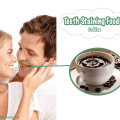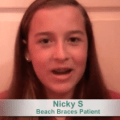What is Class 3 Malocclusion | 9 AMAZING FACTS
Last Updated on October 30, 2023 by Gio Greenard
Class 3 Malocclusion treatment options. Firstly, if you suspect that you or your child may have a class 3 malocclusion, it is important to get more information on the subject. A class 3 malocclusion can cause many issues because it makes it difficult for a person to bite properly, and it can cause some self-esteem concerns. Fortunately, there is some hope for people who end up with a class 3 malocclusion. There are a few treatment options that can provide a very good outcome. In this post, we’re going to show you the facts on correcting your smile. Let’s dive right in.

Image by Mohamed Chermiti from Pixabay
People also ask
What Is a Class 3 Malocclusion?
- In order to understand the answer to “what is a class 3 malocclusion?” it is necessary to learn a little more about the general concept of malocclusions. This is an orthodontic term describing any sort of situation where teeth do not fit together. It gets its name from the Latin words for the phrase “bad bite.”
- As the name implies, a patient with a malocclusion has teeth that do not properly connect with each other whenever a patient bites down. A class 3 malocclusion happens when the lower teeth protrude past the upper teeth. There are many other names for a class 3 malocclusion, including an underbite or prognathism.
How Do I Diagnose?
- In its most simple form, a class 3 malocclusion may simply be lower teeth that are not behind the upper teeth. However, many people with a class 3 malocclusion develop further issues due to years of trying to compensate. The incisors may become more vertically positioned and the molars may twist to try to create a more effective bite despite the malocclusion.
- A malocclusion can typically be diagnosed by about the age of 7. They can often be noticed just by a quick visual examination if the patient’s lower jaw severely protrudes. However, it can be a little more difficult to diagnose a class 3 malocclusion if it is fairly mild. The orthodontist may need to take X-rays, photos, or plaster models of the teeth to see whether or not the person has a malocclusion.
What Are the Causes of Class 3 Malocclusions?
- When they first hear about a malocclusion, most people wonder “what causes class 3 malocclusion and how can I avoid getting one?” There are a few different causes of class 3 malocclusions, and unfortunately, not all of them are preventable.
Misshapen Jaws and Teeth
- In most cases, the cause of a class 3 malocclusion is a misshapen jaw or teeth. If the jaw is too small for the size of the teeth, they can grow in crowded and uneven. In cases where the jaw is too big for the size of a child’s teeth, their teeth can drift forward. Because there is little you can do to affect the way your jaw and teeth grow, the most common answer to the question of “what causes class 3 malocclusion and how can I avoid getting one?” is simply that it is an unpreventable condition that starts happening as soon as you are born.
Pacifiers and Thumb Sucking
- In some cases, a class 3 malocclusion may be caused by excessive use of a pacifier or years of thumb sucking. The sucking gesture can put a lot of pressure on the bottom teeth, pushing them outwards over time. This cause of malocclusion is entirely preventable, so it is important to take steps to address thumb sucking or pacifier attachment before it becomes a problem.
Tooth Loss
- Losing even just one tooth can cause the rest of the teeth in the jaw to shift out of alignment over time. In some cases, tooth loss can be avoided by brushing and flossing regularly and avoiding sports with a lot of physical contact.
Different Treatment Options for a Class 3 Malocclusion
- Some people may see a class 3 malocclusion as a cosmetic issue that does not require treatment. However, the reality is that having an underbite can make it hard to chew properly. Thus, over time, this causes strain and damage to the teeth and jaw muscles. If left untreated, a person can end up dealing with a lot of chronic pain and tooth problems.
- Your first step in deciding on treatment should be asking “what are the different treatment options for a class 3 malocclusion?” There are several potential methods for dealing with this tooth problem, and each one has its own unique advantages.
Braces
- Braces simultaneously straighten teeth and adjust a bite. This is one of the favorite nonsurgical methods for dealing with an underbite because it is minimally invasive. It uses brackets and wires to shift the teeth into a better position.
Orthodontic Appliances
- There are many types of devices that are used alongside braces to help with an underbite. A patient may need an expander that widens the dental arch and gives more space for the teeth to be positioned. Some patients may also need a chin cap, which goes over the chin and head to hold the lower jaw in place.
- Another helpful piece of equipment may be a reverse pull face mask. This involves metal bands attached to headgear, and it helps to put the top jaw in the correct position.
Tooth Reshaping
- For some patients, dental cosmetic surgery can provide treatment. This approach to a type 3 malocclusion involves reshaping the lower teeth or installing veneers to ensure that the upper jaw closes over the lower jaw. Cosmetic treatment provides plenty of aesthetic advantages and can help with some jaw functioning, but it is not always effective for those with a significant underbite.
Surgery
- Lastly, in very severe cases of malocclusion, surgery may be necessary for treatment. Surgery is almost always recommended in cases of adult malocclusion because the teeth and jaw are no longer developing. This type of surgery can be quite intense, so you will need a talented oral and maxillofacial surgeon.
Conclusion
Accordingly, if you are not happy with the positioning of your teeth, do not delay in getting treatment. Our orthodontist will work with you to find a treatment option that suits your individual needs. The longer you wait to treat malocclusion, the more difficult it can be to manage it.
Transform your smile with confidence at Beach Braces with Dr. Panucci in Manhattan Beach, California! Whether you’re dealing with misaligned teeth or just seeking a brighter smile, we’re here to help. Book a consultation today and start your journey to a more confident you. 🔗 Schedule Your Appointment Now

Dr Patti Panucci attended the University of Louisville School of Dentistry for four years, where she graduated with a DMD degree (May 2000) among the Top 10 in her class. Following that, she headed west to Los Angeles to complete her three-year residency at one of the top-ranked orthodontic programs in the country – the University of Southern California.
Along with her certificate in orthodontics, Dr. Panucci earned a master’s degree in craniofacial biology. During those three years, she fell in love with Southern California beach life and decided that this was where her future lay.











Leave a Reply
Want to join the discussion?Feel free to contribute!